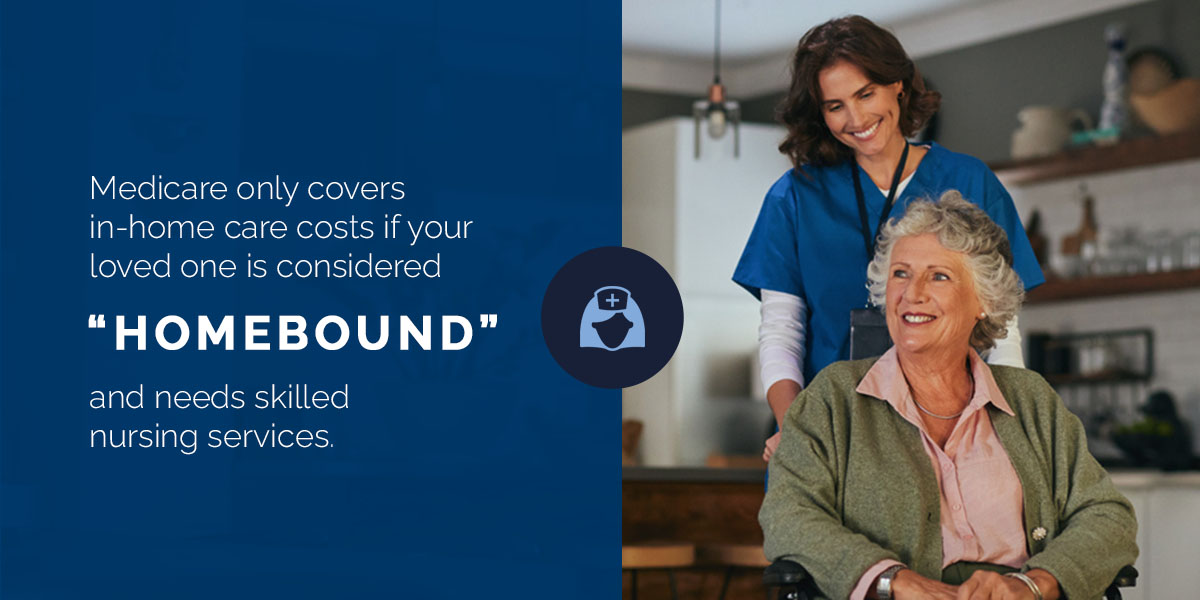If you have an aging family member, your first step in long-term care planning will likely be determining your financial options. In-home care can be vital, as it can be challenging for older adults to live safely at home as they age. Many people prefer this arrangement, as it lets them feel more independent and age comfortably where they live.
Fortunately, you can find payment options that may cover these services, from Medicare and Medicaid to long-term care insurance and nonprofit funding. Read on to learn about financial options and eligibility criteria to help your loved one get the in-home care they need.
Understanding Home Care Costs and Insurance Coverage
Home care includes services that someone might receive for an injury or chronic medical condition. Older adults also need help with activities of daily living (ADL) or simply a companion to spend time with at home. In 2023, the reported national median rate for home health services was $33 per hour in the United States. However, the actual costs will depend on factors like:
- The type of care required
- Geographic location
- Hours of care needed
Insurance might not cover nonmedical home care, like companionship and help with ADLs, but you’ll want to get a full assessment of your loved one’s needs. That way, you have an accurate picture of the type and amount of services they’ll need and the insurance that might cover it. Additionally, you might be able to get help from community resources or nonprofit funding to cover your loved one’s care.
To determine if their current insurance plan includes home care services, review the policy documents closely for these details. You can also call customer service to ask about coverage or speak with a doctor about their needs and documentation.
Types of Insurance That Might Pay for In-Home Care
In most cases, clients use various sources to fund in-home care, many of which include some type of insurance. The following are some of the most common insurance providers that cover aspects of home care costs, depending on your loved one’s diagnosis, medical needs, medicines and other factors:
Medicare and In-Home Care

Medicare only covers in-home care costs if your loved one is considered “homebound” and needs skilled nursing services. Covered home health services include necessary part-time or intermittent:
- Education for patients and family caregivers
- Intravenous therapy or nutritional support
- Supervision of health conditions and unstable medical statuses
Medicare can be limited in covering personal care activities like bathing and dressing. There might also be criteria requirements about your loved one’s medical necessity or homebound status.
Medicaid for In-Home Care Services
Medicaid usually follows similar coverage guidelines as Medicare, except it offers additional services for those living below a certain economic level. The benefits vary by state, but they typically include broader coverage for in-home care. Some Medicaid programs even allow a spouse, child or family caregiver to receive financial support for caring for an older adult, which can alleviate home care costs.
State-specific waivers can also support home care needs. For example, in Ohio, the Ohio Home Care Waiver (OHCW) helps people with physical disabilities or medical conditions receive at-home care, meal delivery and home maintenance. You’ll want to check your exact state’s Medicaid benefits to see the types of home care your loved one can receive.
Private Insurance Policies and Long-Term Care Insurance
Most standard private health insurance plans won’t cover extensive in-home care. However, a dedicated long-term care insurance (LTCI) policy might help fund services like personal care assistance, which includes help with bathing, dressing and eating. Others might cover homemaker services like meal preparation and light housekeeping so your loved one can receive care in their own home.
Costs Not Covered by Insurance
Certain out-of-pocket costs, such as personal care items, family caregiver transportation or any services not included in your plan, might not be covered by insurance. To manage these costs, it can help to create a budget by tracking expenses and setting aside money each month for in-home care.
Some insurance policies have limitations and exclusions, like nonmedical home care or services provided by unlicensed family caregivers. To address these gaps, read your loved one’s insurance policy carefully. Then, talk to the insurance company to see if you can add coverage. You might be able to find alternative options for services your loved one needs that aren’t covered.
Steps to Determine Your Insurance Coverage for Home Care
Follow these steps to see if you qualify for in-home care insurance coverage:
1. Review Your Policy
Start by carefully reviewing your insurance policy. Look for key components related to home care and pay attention to any limitations or exclusions, as these will tell you what services are not covered. Knowing these insurance terms can help you determine what is covered and what you might owe for in-home care:
- Deductible: This is the amount you must pay out of pocket for health care before insurance starts to help cover costs.
- Copay: A copayment — or copay — is the fixed fee you pay for certain services, like a doctor’s visit. The copay is usually lower than the total cost without insurance.
- Coverage cap: A coverage cap is the maximum amount your insurance will pay for services in a year or over your lifetime. This means you’ll have to pay any costs beyond this limit yourself.
2. Contact Your Insurance Provider
Reach out to your insurance provider for clarification. Ask questions like:
- What types of in-home care services are covered?
- Do you need a doctor’s referral?
- Are there any limits on the number of visits or hours?
Make sure to take notes during the conversation to keep track of their responses. If you have uncertainties, don’t hesitate to ask for clarification.
3. Explore Alternative Payment Options
If your insurance doesn’t fully cover in-home care, you can explore a range of alternative payment options. Many financial assistance programs, such as Medicaid or local government programs, can help with costs. Community resources like nonprofit organizations might offer support or funding for in-home care services. Researching these options can provide your loved one with the financial help they need to get the best care possible.
Get Quality In-Home Care Services at Village Caregiving
Navigating home care insurance can be challenging, but you don’t have to do it alone. At Village Caregiving, we understand the importance of finding the proper support for your loved ones. Our dedicated team is here to provide personalized in-home care that meets your family’s unique needs. Our family caregivers pride themselves on their willingness to go the extra mile in making your loved one comfortable. With flat rates and 24/7 access to your assigned office, we ensure you receive the best service — without hidden fees or barriers.
Consult with Village Caregiving today to explore how our services can complement your insurance coverage and support your family’s journey. Contact us to learn more about our award-winning in-home care services and how we can help your family navigate this process.



Recent Comments